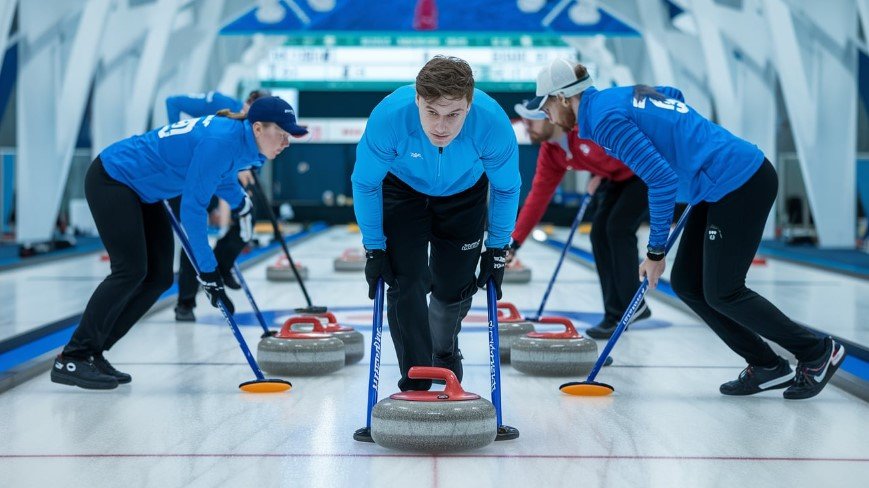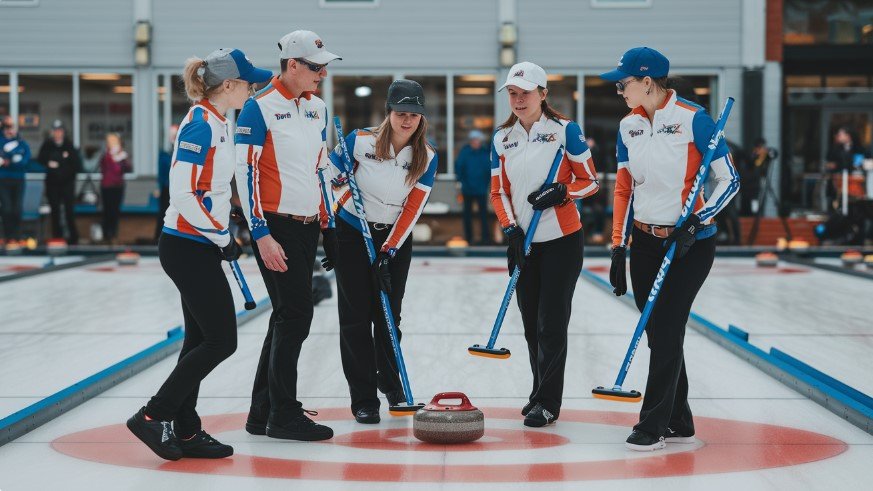Curling, often called “chess on ice,” requires much more than just strategy and precision. It demands strength, endurance, flexibility, balance, and mental toughness. While it may seem less physically taxing than some winter sports, the demands of curling—such as sweeping, balance in delivery, and explosive power from the hack—make physical fitness, especially following curling fitness tips, a key factor in success.
This comprehensive guide will dive into the specific fitness components that every curler, whether beginner or experienced, needs to work on. We’ll explore targeted training tips, workout plans, and key curling fitness tips to improve your performance on the ice.
Why Fitness Matters in Curling
At first glance, curling may appear to be more of a mental game than a physical one. However, if you’ve ever swept intensely during an end or had to slide with precision for multiple games in a day, you’ll quickly realize the sport’s physical demands. Incorporating curling fitness tips into your training routine can significantly improve your stamina, strength, and precision on the ice.
Here are the primary physical fitness components that play a role in curling:
- Balance and Stability: Delivering the stone requires immense core stability and balance, as you slide out from the hack in a low, controlled position.
- Endurance: A curling match can last up to two hours, requiring cardiovascular endurance, particularly during the intense sweeping phases.
- Strength: Strength, particularly in the lower body and core, helps in delivering powerful and accurate shots.
- Flexibility: To maintain the deep lunge position during delivery and to recover quickly between moves, flexibility in the hips and legs is crucial.
- Agility: Quick adjustments on the ice, fast reactions during sweeping, and rapid decision-making require agility and coordination.
Whether you’re just starting out or aiming to up your game, focusing on fitness will significantly impact your performance and stamina on the ice.

Key Fitness Areas for Curlers
1. Core Strength
Curling requires a strong core for balance and control, especially during the delivery of the stone. A well-conditioned core will allow you to stabilize yourself while sliding and will improve your overall form, making your throws more consistent.
Exercises for Core Strength:
- Plank Variations: Side planks and front planks will help develop your overall core stability.
- Russian Twists: Add a twisting motion to your core workouts to simulate the rotational strength needed during delivery.
- Bird Dogs: This exercise challenges balance and core engagement, making it ideal for curlers.
Check out this detailed guide on core exercises for athletes.
2. Lower Body Strength
Your legs play a pivotal role in delivering the stone with power and accuracy. Pushing off from the hack, staying low during the delivery, and maintaining balance all depend on strong leg muscles, particularly the quads, hamstrings, and glutes.
Exercises for Lower Body Strength:
- Lunges and Reverse Lunges: These exercises mimic the curling delivery position and help build single-leg strength and flexibility.
- Squats: Both bodyweight and weighted squats will enhance your ability to generate power from your legs.
- Step-Ups: Use a box or step to build lower body explosiveness and balance, which is critical during the push-off from the hack.
3. Cardiovascular Endurance
Sweeping is one of the most physically demanding parts of curling. It requires bursts of intense effort, often lasting up to 20 seconds or more, and you’ll need to sustain this throughout a match. Incorporating curling fitness tips can significantly boost your performance, as high cardiovascular endurance will allow you to maintain your energy levels and stay effective during the later stages of the game.
Training for Endurance:
- Interval Training: Combine periods of high-intensity sweeping practice with short recovery phases to mimic real game scenarios.
- Running or Cycling: These activities build general cardiovascular endurance. Try adding sprint intervals to boost your stamina for sweeping.
- Rowing Machine: This is one of the best tools for building both upper and lower body endurance and can simulate the arm and back strength needed for sweeping.
4. Flexibility and Mobility
A key element in curling is the ability to stretch into deep lunges without compromising stability. Flexibility in the hips, legs, and lower back will allow you to maintain the optimal delivery position for longer and avoid injury. Incorporating curling fitness tips into your routine, such as improving mobility and flexibility, is essential for sweeping, where quick, agile movements are required.
Exercises for Flexibility and Mobility:
- Hip Flexor Stretches: Keeping your hips loose and flexible is essential for a smooth delivery slide.
- Hamstring Stretches: Since the delivery involves a significant stretch of the back leg, keeping your hamstrings flexible is crucial.
- Yoga and Pilates: Both are excellent for improving flexibility, balance, and core strength.
Curling Workout Plan for Beginners and Intermediate Players
Here’s a 4-week training plan designed specifically for curling athletes. This plan is aimed at improving your overall fitness with a focus on the areas most important for curling.

Week 1-2: Building Foundation
- Day 1: Core Strength and Stability
- Planks (3×45 seconds)
- Russian Twists (3×20 reps)
- Bird Dogs (3×12 reps each side)
- Day 2: Lower Body Strength
- Bodyweight Squats (4×12 reps)
- Lunges (3×10 reps per leg)
- Step-Ups (3×10 reps each leg)
- Day 3: Endurance
- 30 minutes of moderate cycling or jogging
- 5×30-second sprint intervals
Week 3-4: Increasing Intensity
- Day 1: Advanced Core and Flexibility
- Side Planks (3×45 seconds each side)
- Bicycle Crunches (3×25 reps)
- Yoga stretching session (20 minutes)
- Day 2: Lower Body Power
- Weighted Squats (4×10 reps)
- Reverse Lunges (3×12 reps per leg)
- Box Jumps (3×10 reps)
- Day 3: Endurance and Sweeping Simulation
- Rowing machine (20 minutes, moderate pace)
- 6×20-second sweeping intervals with short recovery periods
Note: Always include a warm-up (5-10 minutes of light cardio) and cool-down (stretching) in each workout session.
Mental Toughness and Focus in Curling
Curling isn’t just about physical fitness; it’s also a game of mental resilience. The ability to stay focused, handle pressure, and remain composed under tense conditions can make or break a game.
Training Your Mind for Curling:
- Visualization: Before each match, visualize the shots you want to make. This can help prepare your mind and body for success.
- Meditation and Breathing Exercises: These help reduce anxiety and increase focus, which are especially helpful during crucial moments in the game.
- Pre-game Rituals: Develop a consistent pre-game routine that includes stretching, mental visualization, and light practice to get into the zone.
For more on mental toughness training, check out this excellent resource here.
Nutrition and Hydration for Curling
Like any sport, curling requires the right fuel. A balanced diet rich in protein, complex carbs, and healthy fats will keep your energy levels high and your muscles strong. Proper hydration is also essential, especially for those long tournament days where you’re on the ice for hours.
Nutrition Tips for Curlers:
- Pre-game Fuel: Eat a meal rich in complex carbs (like whole grains or sweet potatoes) a few hours before the game.
- Stay Hydrated: Sip water throughout the day and during matches to prevent dehydration, which can lead to fatigue.
- Post-game Recovery: Focus on protein-rich foods (like lean meats or plant-based proteins) after the game to help repair muscles.

Elevate Your Curling Game with the Right Fitness Plan
To excel at curling, you must pay attention to your physical conditioning. Whether you’re just beginning or have years of experience, focusing on fitness will give you a competitive edge and help you last longer in matches without fatigue. By incorporating core strength, lower body power, endurance, flexibility, and mental toughness into your routine, you’ll improve both your physical abilities and your overall curling strategy.
Curling is a sport that rewards preparation. The fitter you are, the more control you’ll have over your movements on the ice, making every throw, sweep, and strategy count.
Now it’s time to lace up your curling shoes and hit the ice, stronger and more prepared than ever before!



